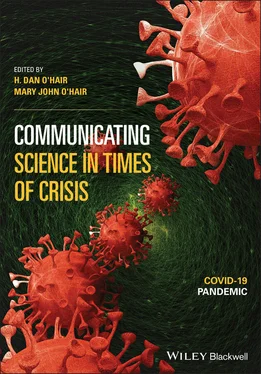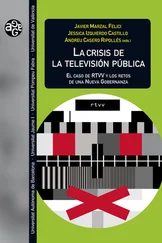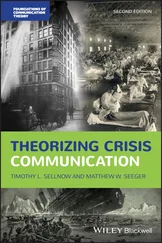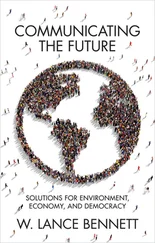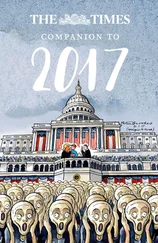46 Greenberg, J., Simon, L., Pyszczynski, T., Solomon, S., & Chatel, D. (1992). Terror management and tolerance: Does mortality salience always intensify negative reactions to others who threaten one’s worldview? Journal of Personality and Social Psychology, 63(2), 212–220. https://doi.org/10.1037/0022-3514.63.2.212
47 Greenberg, J., Solomon, S., & Pyszczynski, T. (1997). Terror management theory of self-esteem and cultural worldviews: Empirical assessments and conceptual refinements. In M. P. Zanna (Ed.), Advances in experimental social psychology (Vol. 29, pp. 61–139). Academic Press.
48 Greenberg, J., Solomon, S., Pyszczynski, T., Rosenblatt, A., Burling, J., Lyon, D., & Simon, L. (1992). Assessing the terror management analysis of self-esteem: Converging evidence of an anxiety-buffering function. Journal of Personality and Social Psychology, 63(6), 913–922.
49 Gringlas, S. (2020, October 3). At least 8 people test positive for coronavirus after Rose Garden event for Barrett. NPR online. https://www.npr.org/sections/latest-updates-trump-covid-19-results/2020/10/03/919851907/at-least-7-people-test-positive-for-coronavirus-after-rose-garden-event-for-barr
50 Hallowell, A. I. (1956). The structural and functional dimensions of a human existence. The Quarterly Review of Biology, 31(2), 88–101. https://doi.org/doi:10.1086/401258
51 Han, R., & Xu, J. (2020). A comparative study of the role of interpersonal communication, traditional media and social media in pro-environmental behavior: A China-based study. International Journal of Environmental Research and Public Health, 17(6), 1883. https://www.ncbi.nlm.nih.gov/pmc/articles/PMC7142584
52 Harmon-Jones, E., Simon, L., Greenberg, J., Pyszczynski, T., Solomon, S., & McGregor, H. (1997). Terror management theory and self-esteem: Evidence that increased self-esteem reduced mortality salience effects. Journal of Personality and Social Psychology, 72(1), 24–36. https://doi.org/10.1037/0022-3514.72.1.24
53 Hayes, J., Schimel, J., Faucher, E. H., & Williams, T. J. (2008). Evidence for the DTA hypothesis II: Threatening self-esteem increases death-thought accessibility. Journal of Experimental Social Psychology, 44(3), 600–613. https://doi.org/10.1016/j.jesp.2008.01.004
54 Helzer, E. G., & Pizarro, D. A. (2011). Dirty liberals! Reminders of physical cleanliness influence moral and political attitudes. Psychological Science, 22(4), 517–522. https://doi.org/10.1177/0956797611402514
55 Hiebert, P. (2020, February 26). Hand sanitizer in the Time of Coronavirus. ADWEEK. https://www.adweek.com/retail/demand-for-hand-sanitizer-and-disinfecting-wipes-goes-viral-amid-coronavirus-scare
56 Hirschberger, G, & Ein-Dor, T. (2006). Defenders of a lost cause: Terror management and violent resistance to the disengagement plan. Personality and Social Psychology Bulletin, 32(6), 761–769. https://doi:10.1177/0146167206286628PMID: 16648201.
57 Hirschberger, G., Ein-Dor, T., & Almakias, S. (2008). The self-protective altruist: Terror management and the ambivalent nature of prosocial behavior. Personality and Social Psychology Bulletin, 34(5), 666–678. https://doi.org/10.1177/0146167207313933
58 Hofstede Insights. (2020). Compare countries. https://www.hofstede-insights.com/product/compare-countries
59 Huddy, L., Khatib, N., & Capelos, T. (2002). Trends: Reactions to the terrorist attacks of September 11, 2001. The Public Opinion Quarterly, 66(3), 418–450. https://www.jstor.org/stable/3078770
60 Human Rights Watch. (2020, May 12). Covid-19 fueling anti-Asian racism and xenophobia worldwide. Human Rights Watch. https://www.hrw.org/news/2020/05/12/covid-19-fueling-anti-asian-racism-and-xenophobia-worldwide
61 Inbar, Y., Westgate, E. C., Pizarro, D. A., & Nosek, B. A. (2016). Can a naturally occurring pathogen threat change social attitudes? Evaluations of gay men and lesbians during the 2014 Ebola epidemic. Social Psychological and Personality Science, 7(5), 420–427. https://doi.org/10.1177/1948550616639651
62 Jackson, C. & Newall, M. (2020, September 24–27). Axios/Ipsos Poll—Wave 26. https://www.ipsos.com/sites/default/files/ct/news/documents/2020-09/topline-axios-coronavirus-index-w26_0.pdf
63 Jonas, E., Fritsche, I., & Greenberg, J. (2005). Currencies as cultural symbols—an existential psychological perspective on reactions of Germans toward the Euro. Journal of Economic Psychology, 26(1), 129–146. https://doi.org/10.1016/j.joep.2004.02.003
64 Jost, J. T., Glaser, J., Kruglanski, A. W., & Sulloway, F. J. (2003). Political conservatism as motivated social cognition. Psychological Bulletin, 129(3), 339–375. https://doi.org/10.1037/0033-2909.129.3.339
65 Juhl, J., & Routledge, C. (2014). Finding the terror that the social self manages: Interdependent self-construal protects against the anxiety engendered by death awareness. Journal of Social and Clinical Psychology, 33, 365–379. https://doi.org/10.1521/jscp.2014.33.4.365
66 Kaniasty, K. (2020). Social support, interpersonal, and community dynamics following disasters caused by natural hazards. Current Opinion in Psychology, 32, 105–109. https://doi.org/10.1016/j.copsyc.2019.07.026
67 Keil, R., & Ali, H. (2006). Multiculturalism, racism and infectious disease in the global city: The experience of the 2003 SARS outbreak in Toronto. Topia: Canadian Journal of Cultural Studies, 16, 23–49. https://doi.org/10.3138/topia.16.23
68 Kosloff, S., Cesario, J., & Martens, A. (2017). Resistance is futile: Mortality salience increases efforts to assimilate differing others into one’s own worldview. Unpublished manuscript. Fresno, CA.
69 Kosloff, S., Solomon, S., Greenberg, J., Cohen, F., Gershuny, B., Routledge, C., & Pyszczynski, T. (2006). Fatal distraction: The impact of mortality salience on dissociative responses to 9/11 and subsequent anxiety sensitivity. Basic and Applied Social Psychology, 28(4), 349–356. https://doi.org/10.1207/s15324834basp2804_8
70 Landau, M. J., Solomon, S., Greenberg, J., Cohen, F., Pyszczynski, T., Arndt, J., Miller, C. H., Ogilvie, D. M., & Cook, A. (2004). Deliver us from evil: The effects of mortality salience and reminders of 9/11 on support for President George W. Bush. Personality and Social Psychology Bulletin, 30(9), 1136–1150. https://doi.org/10.1177/0146167204267988
71 Li, J.-B., Yang, A., Dou, K., & Cheung, R. Y. (2020). Self-control moderates the association between perceived severity of the coronavirus disease 2019 (COVID-19) and mental health problems among the Chinese public. PsyArXiv Preprints. https://doi.org/10.31234/osf.io/2xadq
72 Lifshin, U., Greenberg, J., Zestcott, C.A., & Sullivan, D. (2017). The evil animal: A terror management theory perspective on the human tendency to kill animals. Pers Soc Psychol Bull, 43(6), 743–757. 10.1177/0146167217697092
73 Lykins, E. L., Segerstrom, S. C., Averill, A. J., Evans, D. R., & Kemeny, M. E. (2007). Goal shifts following reminders of mortality: Reconciling posttraumatic growth and terror management theory. Personality and Social Psychology Bulletin, 33(8), 1088–1099. https://doi.org/10.1177/0146167207303015
74 Ma, H., & Miller, C. (2020). Trapped in a double bind: Chinese overseas student anxiety during the COVID-19 pandemic. Health Communication, 36(1), 59-73, https://doi.org/10.1080/10410236.2020.18480661–8. https://doi.org/10.1080/10410236.2020.1775439
75 Ma, H., Miller, C., & Wong, N. (2020). Don’t let the tornado get you! The effects of agency assignment and self-construal on responses to tornado preparedness messages. Health Communication, (published online, 1–11). https://doi.org/10.1080/10410236.2020.1712038
76 Mackey, R. (2020, October 2). Trump is hospitalized with Covid-19, days after mocking Biden for wearing a mask. The Intercept. https://theintercept.com/2020/10/02/trump-tests-positive-covid-48-hours-mocking-biden-wearing-mask
Читать дальше
